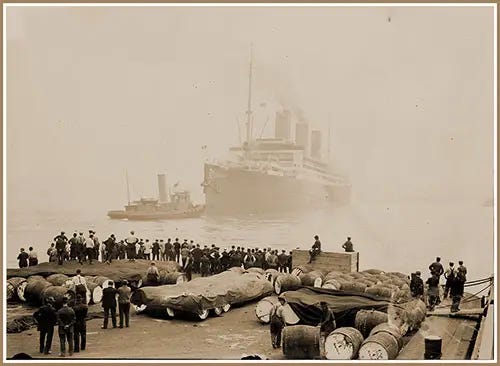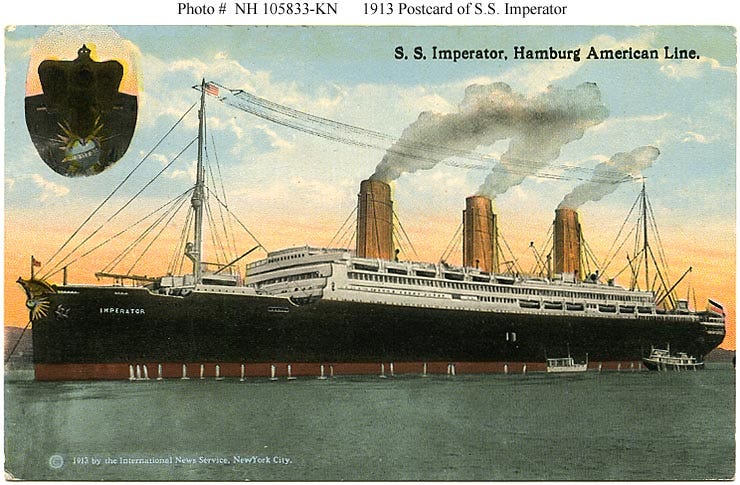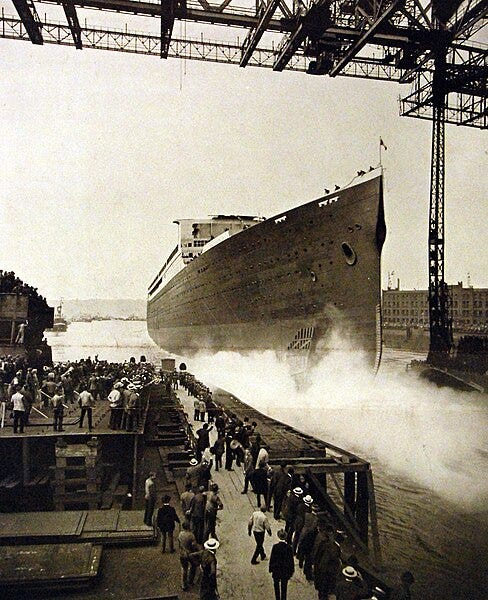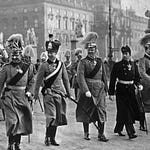Within a year of the loss of the White Star Line’s RMS Titanic, the Hamburg-America Line commissioned the first of three progressively larger vessels that dwarfed the ships of the White Star Line and the rest of the British competition.
They were ambitious in every possible respect: size, speed, luxury, and the ability to carry vast numbers of people. Each of them surpassed 50,000 tons, stretched over 900 feet long, and could carry over 4,500 people in four classes. Equipped with double hulls and search lights on the foremast, they were also the first ships purpose-built to carry more than enough lifeboats for every man, woman, and child aboard.
Germany had every right to be proud of these mechanical marvels. A company press release declared: “Life is conflict, and a strong man must always be armed for battle, either in order to ward off aught that might hinder him in his course, or in order to advance victoriously along hitherto untrodden paths and thus attain his goal. This is the duty of the strong.”
Yet the company meant economic warfare, not physical. A committed pacifist, HAPAG’s general director Albert Ballin made sure that these vessels had absolutely no provisions for military use in their design and construction.
These liners—Imperator, Vaterland, and Bismarck—would remain the largest ships in the world for the next twenty years.
Sadly, their careers would be marked by mechanical teething problems, war, and changing national fortunes.
And a bad omen at one of the launching ceremonies.
More about the planning and fate of these three vessels can be learned in The Last Ships From Hamburg: Business, Rivalry, and the Race to Save Russia’s Jews on the Eve of World War I.















Germany's Seagoing Giants